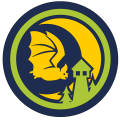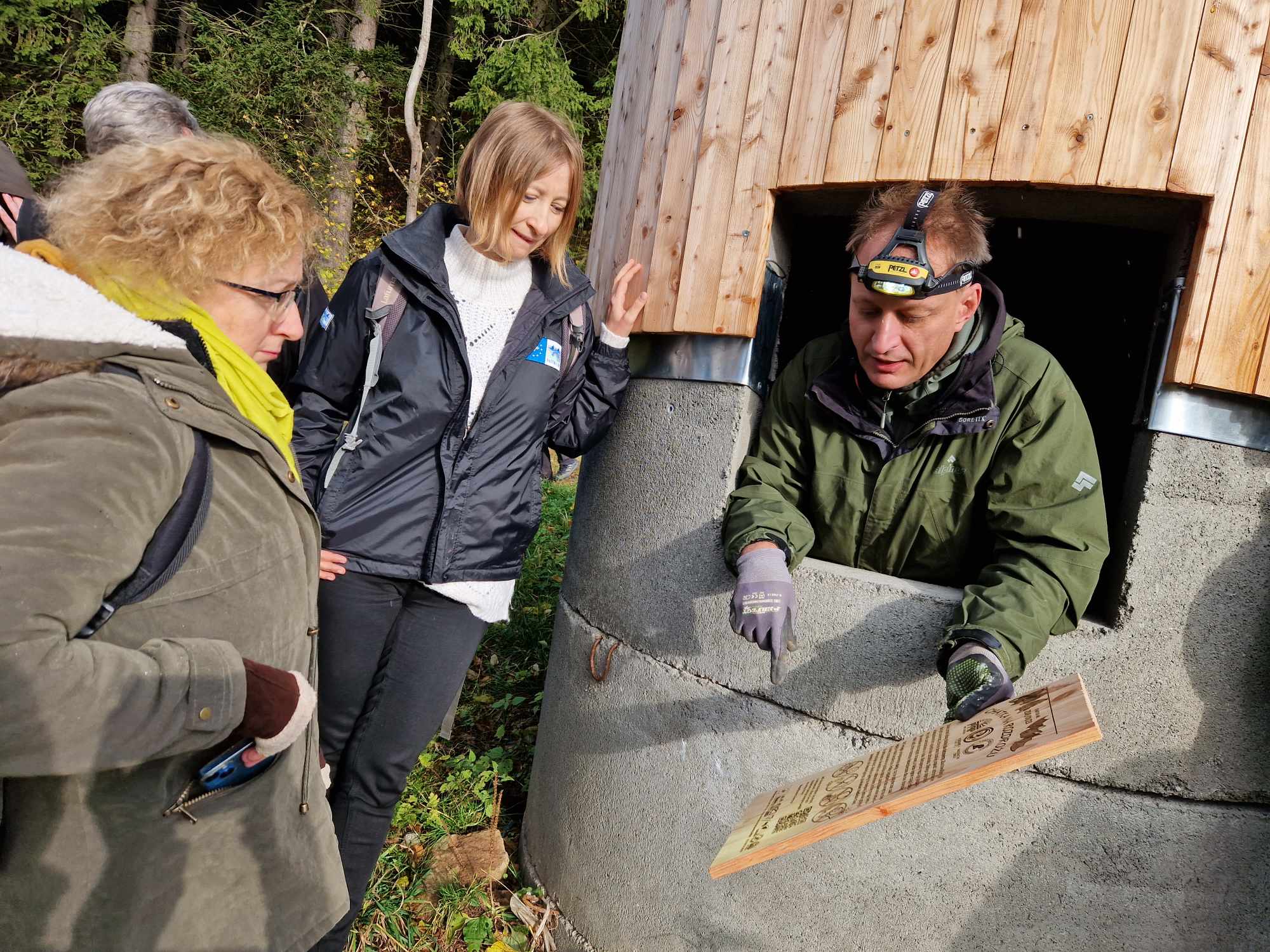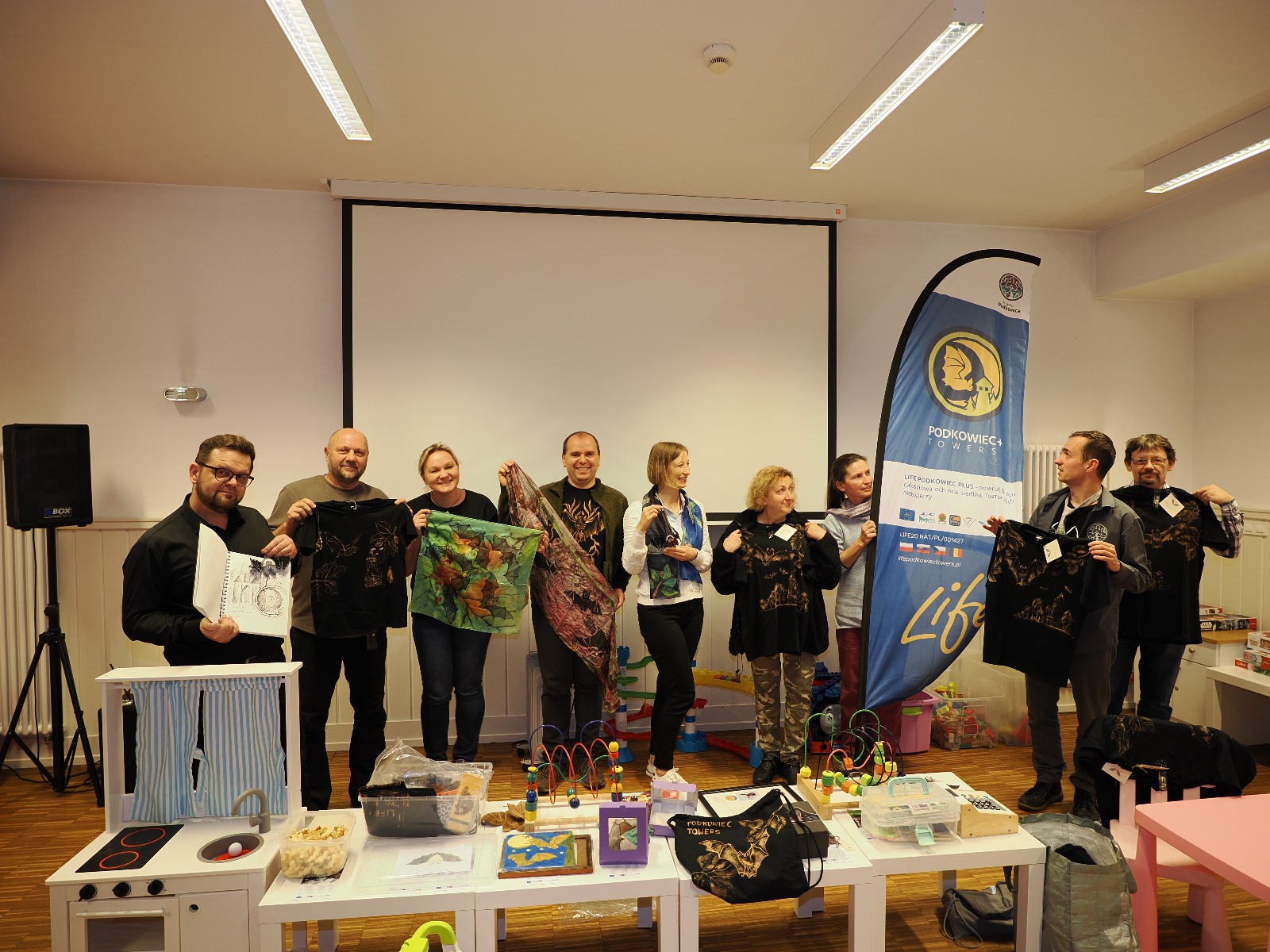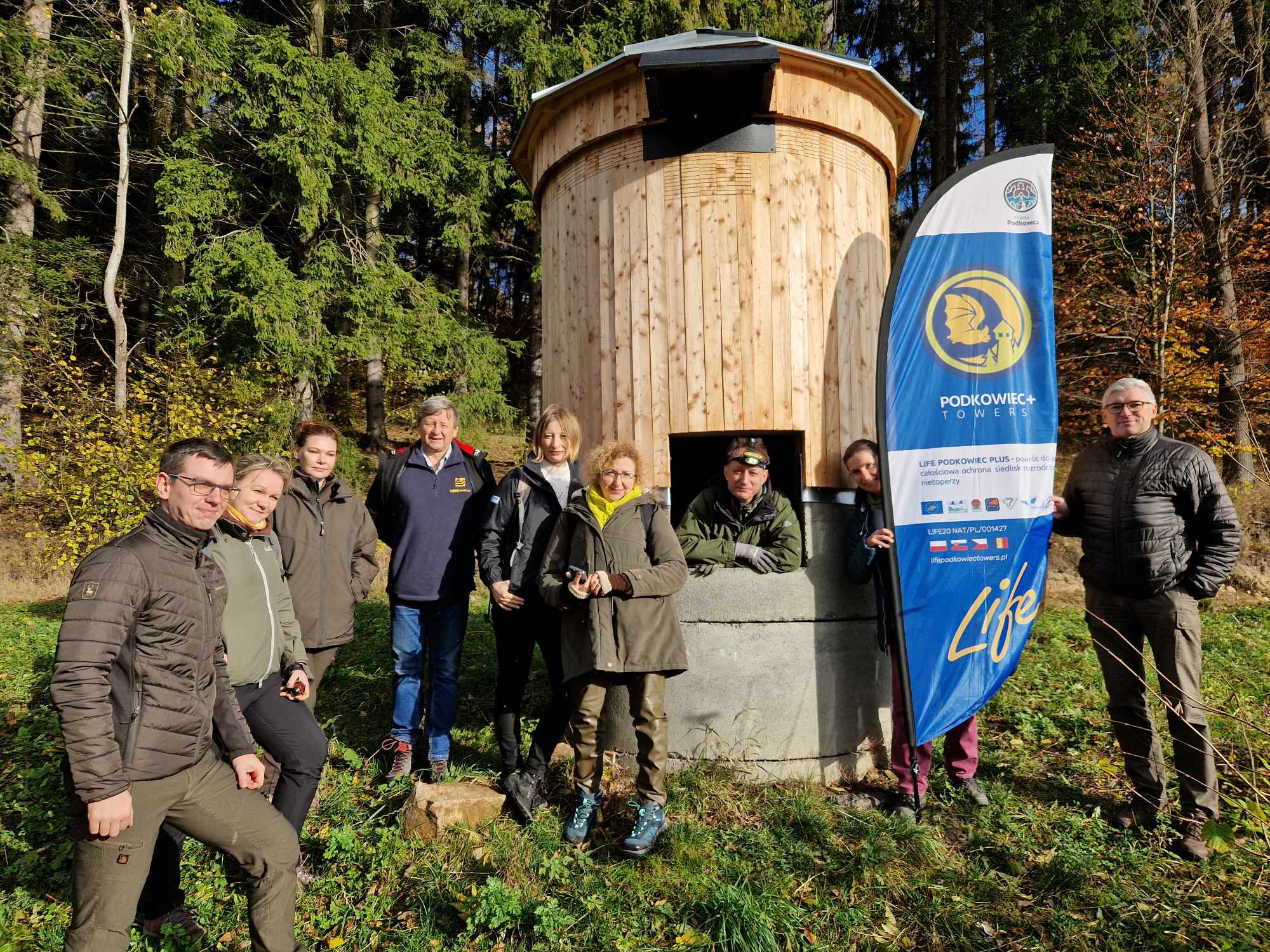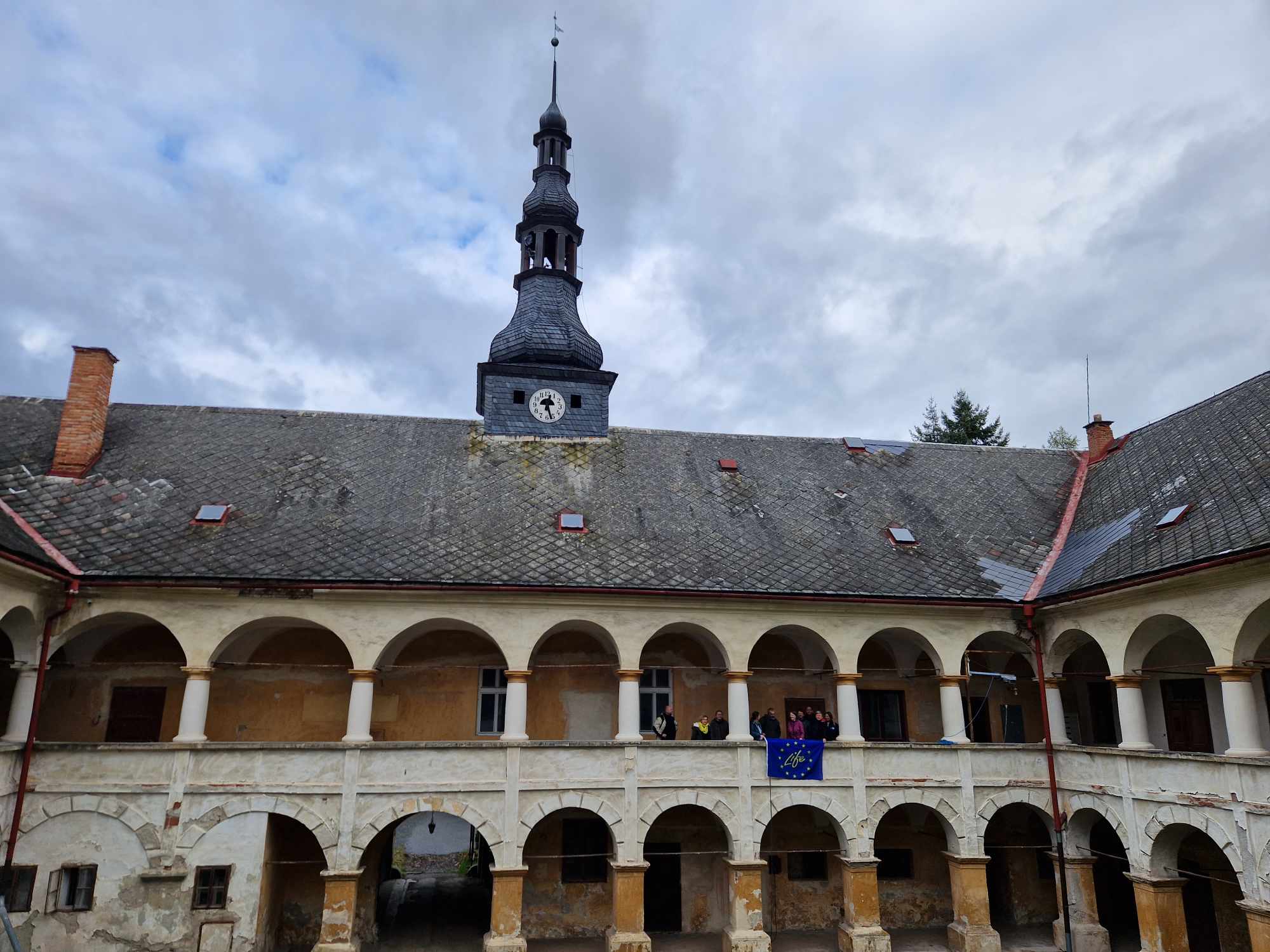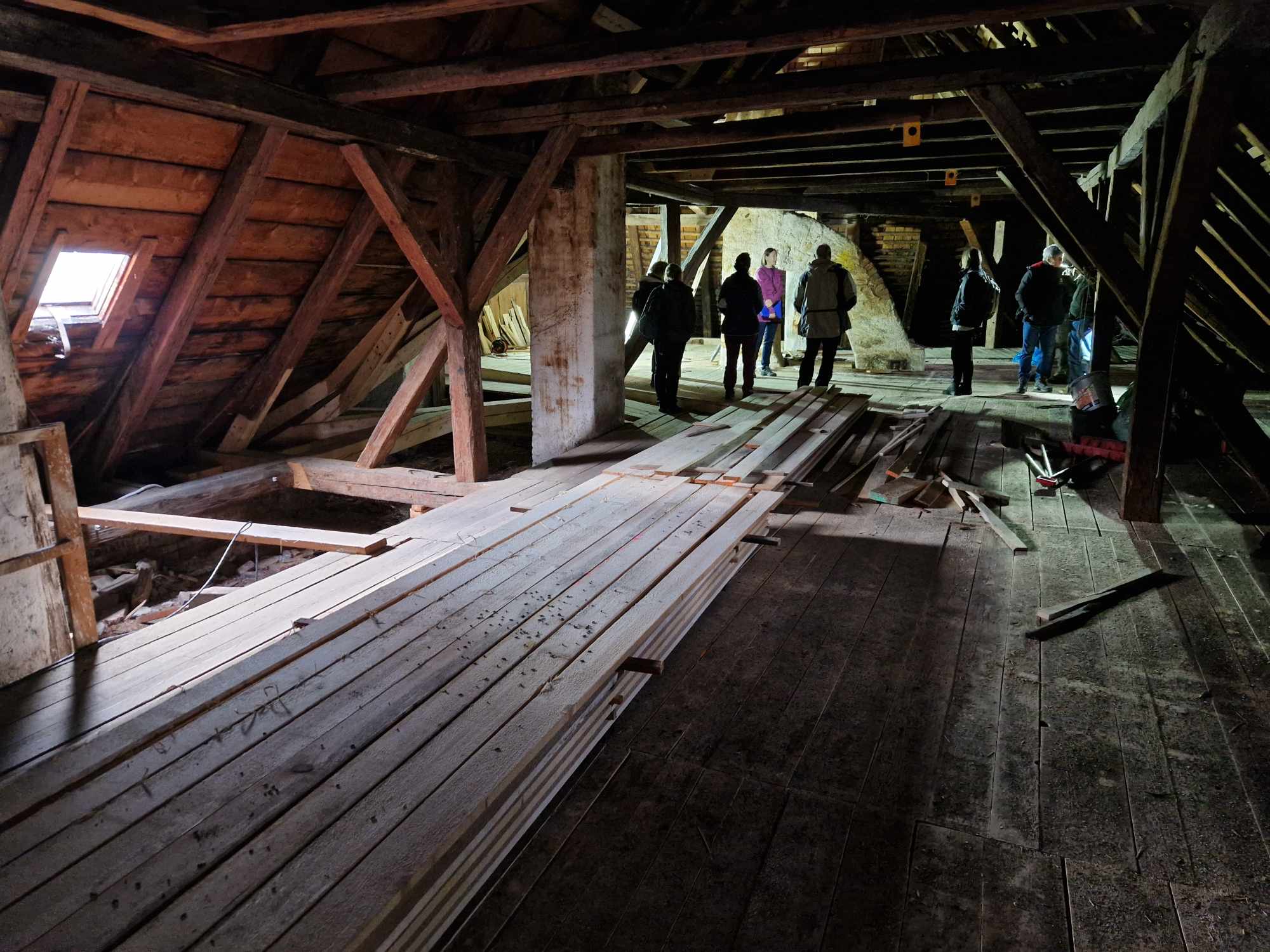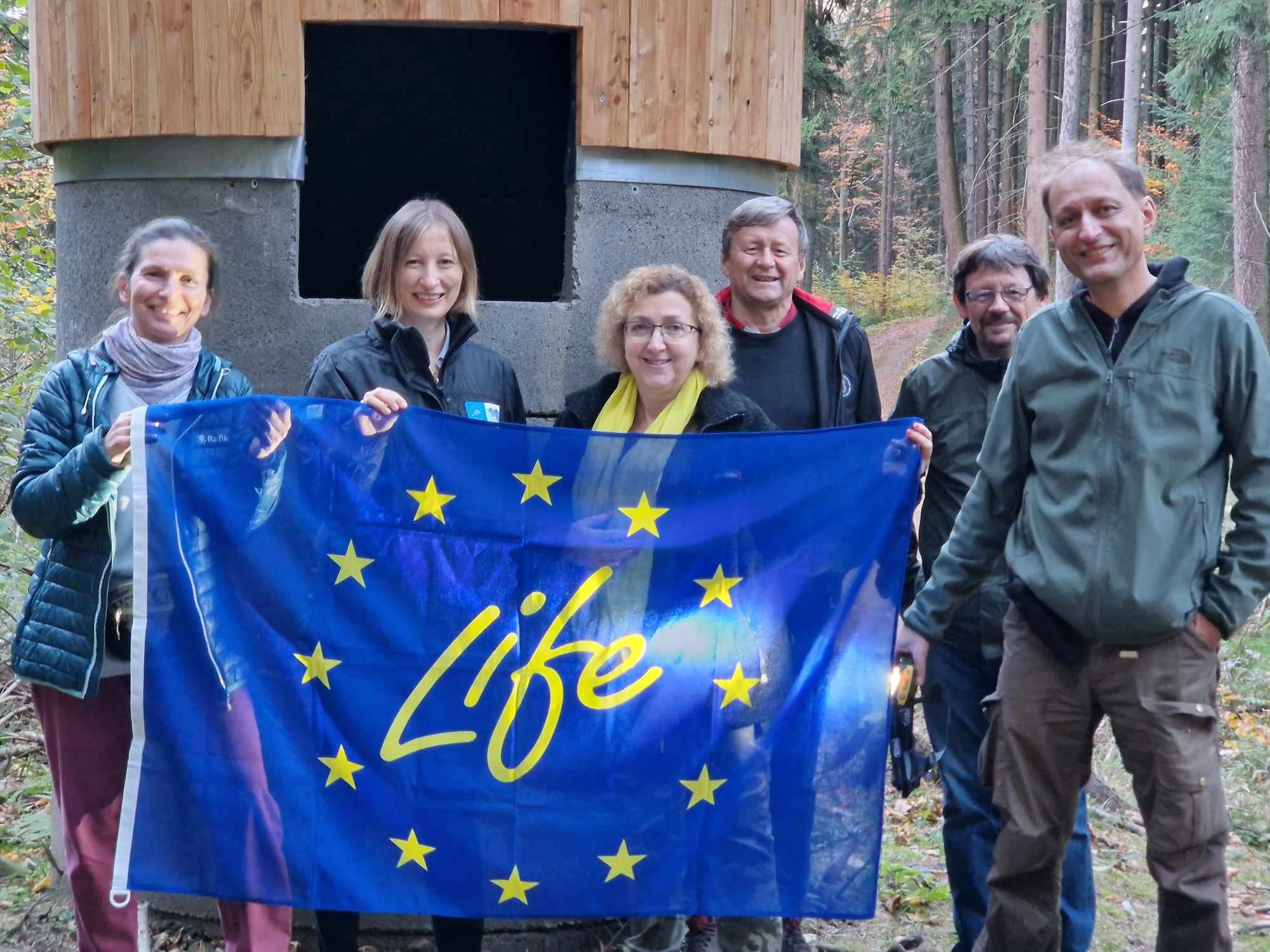One of the good practices of the LIFE programme is to support beneficiaries by organising monitoring visits. On 7-9 November, we were visited by Ms. Maja Mikosińska from the European Commission’s Climate, Infrastructure and Environment Executive Agency (CINEA) and Ms. Marta Kaczyńska, the project’s external monitor for technical and financial monitoring of LIFE projects.
On the first day of the visit, we visited the Bardo Śląskie Forestry District, where, among other things, the first bat huts were built in the Natura 2000 site „Mines in Złoty Stok“. We were able to discuss and evaluate together the making and first signs of the effectiveness of these huts (presence of guano and one bat). In the evening we moved to the conference room, where Piotr Firlej (promotional assistent for the LIFE+ Podkowiec Towers project) presented creating one of the pillars of the project, i.e. the promotion of the project and of bat protection, with the focus on the Lesser horseshoe bat. He also talked about the training completed, which created a group of guides – animators and educators. They were also trained to respond to threats observed in the field in roosts occupied by bats.
The second day started with a meeting at the Zdroje Forestry District, where 10 bat huts have been built. Guided by the forestry staff, we saw some of the huts in the field. We then travelled to the Czech Republic to meet representative of our partner organisation ČESON, Jana Vandrovcová, and the roost supervisor Míroslav Kašpar. They showed us the platforms being built in the attic of the castle in Ruda nad Moravou to protect the wooden structural elements against guano from the Lesser horseshoe and Greater mouse-eared bat maternity colonies. The platforms will make it possible to harmonise the protection of the historic building with the protection of the bats.
What is the progress and results of the project? What project objectives have been achieved? Are there any problems? If so, how can they be solved? We sought answers to these questions during the third day of the visit. It was a day in which we met live and online with the LIFE+ Podkowiec Towers partners. Project coordinator Rafał Szkudlarek discussed at what stage the project activities are and what is still to come. He presented in detail the process of designing and building bat huts, towers and hibernacula. It was time to present the results and plans of each of the programme partners, but also to discuss any problems encountered. Throughout the meeting, we were able to count on the substantive support, knowledge and experience of the ladies monitoring the project, and this provided motivation for further successful bat conservation efforts.
